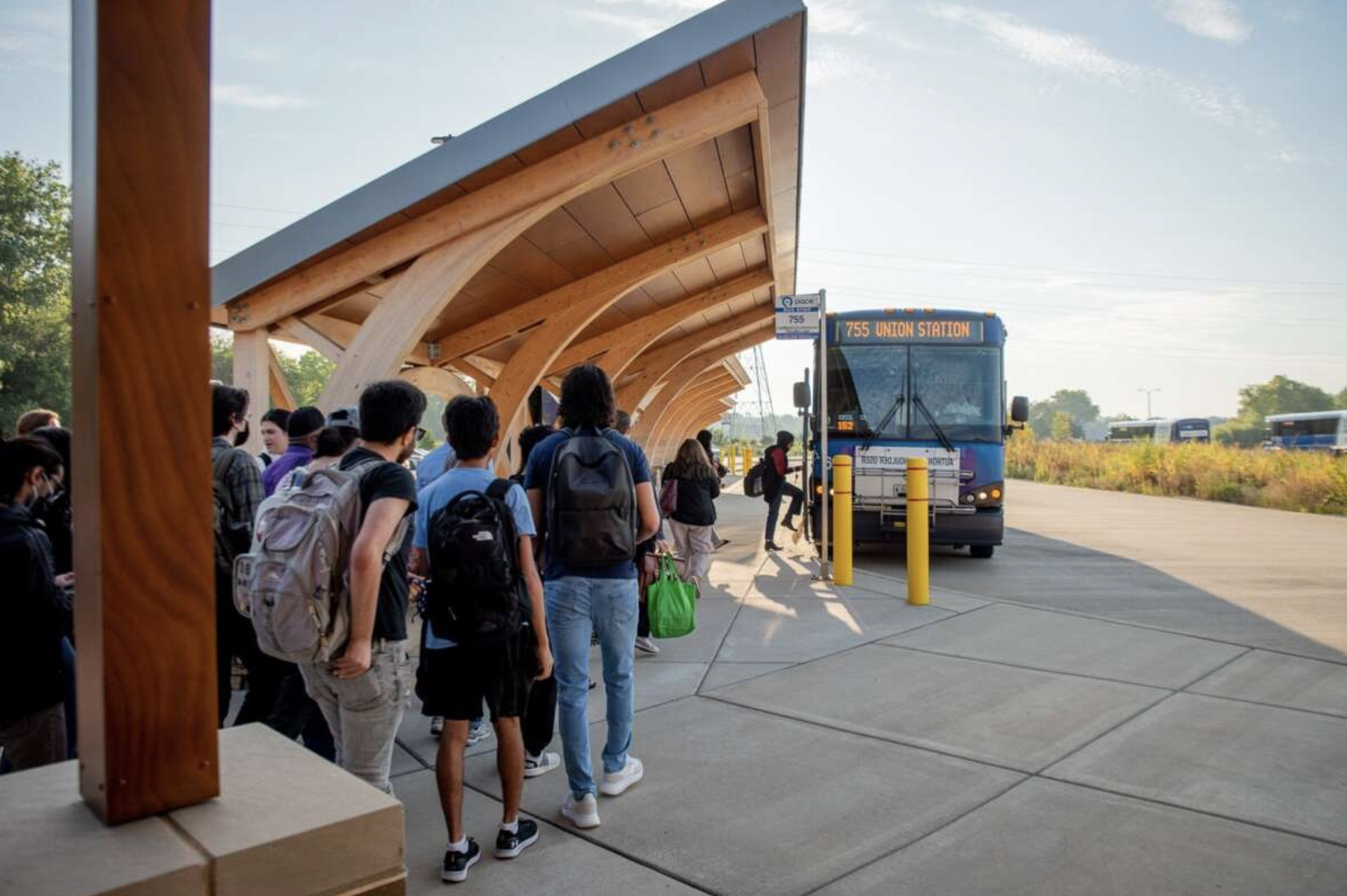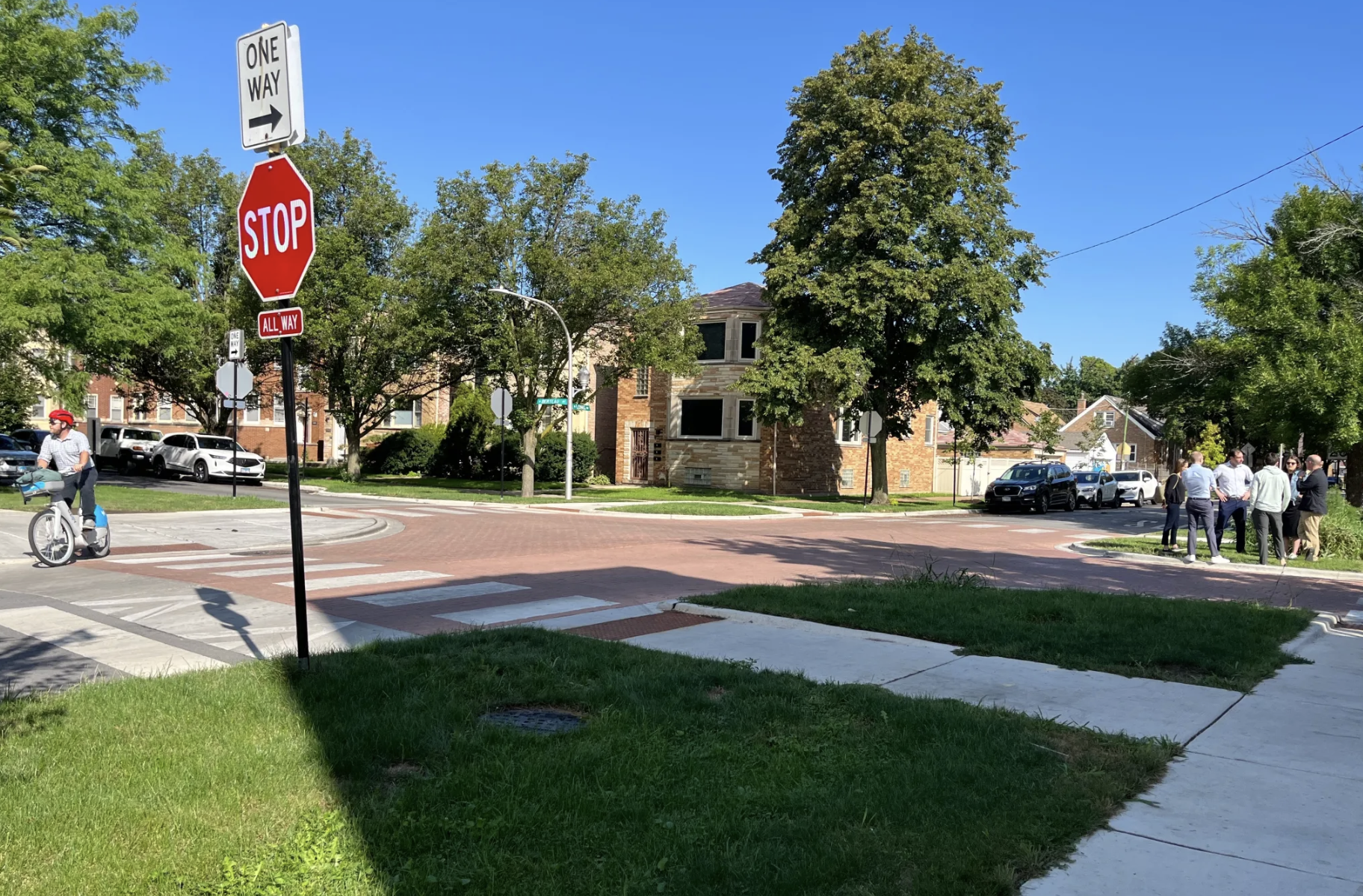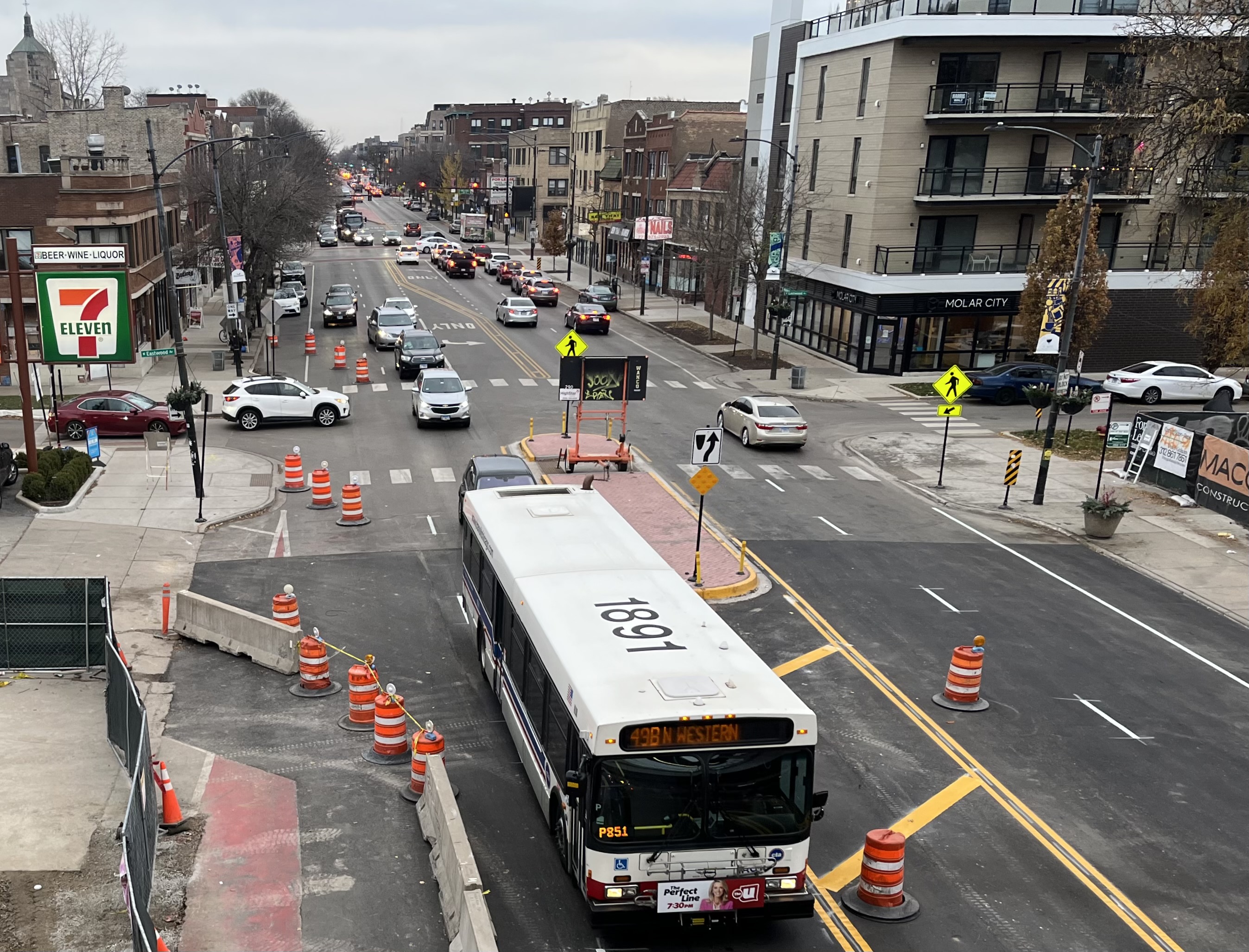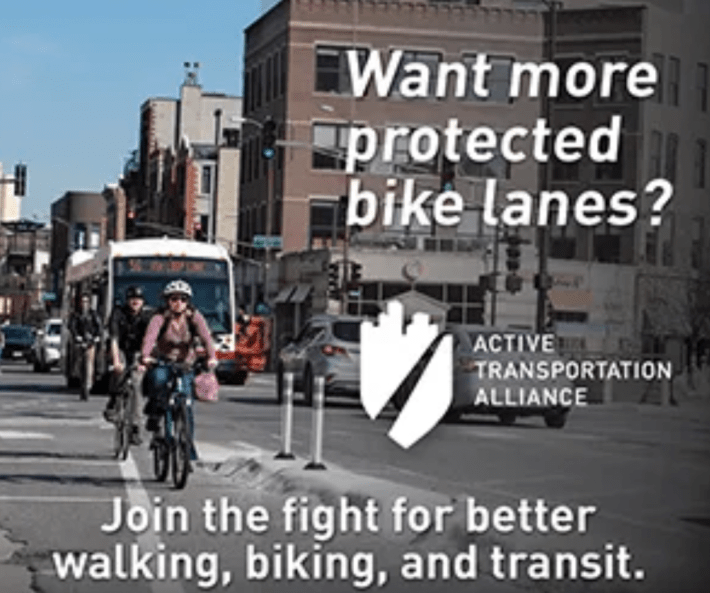
This week the Regional Transportation Authority, which oversees the CTA, Metra, and Pace, rebooted Transportation Tuesday. It's a four-part webinar that RTA says "invites attendees to learn about hot topics in transportation planning as they relate to implementation of the RTA’s new regional transit strategic plan, Transit is the Answer." The first session focused on efforts to advance equity, sustainability, and accessibility, through capital projects.
The panel consisted of Jon Sung, a senior analyst in capital programming for RTA, where he's worked for the past seven years. He began by discussing the new capital project evaluation metrics, such as "access to key destinations" or "benefits to riders."
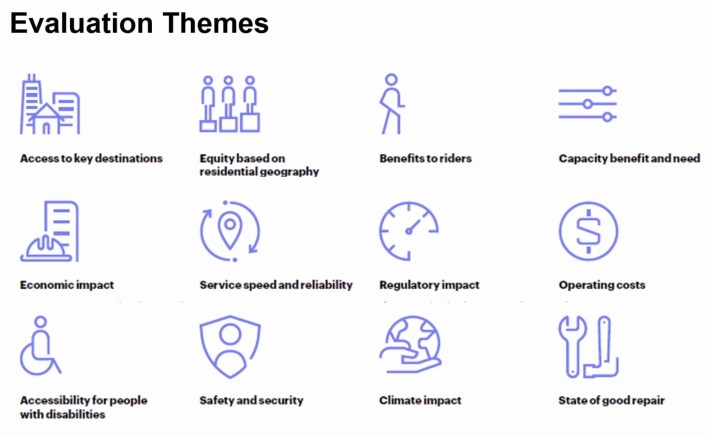
Next, Sung talked about how various projects support different "themes". For equity he cited the Harvey Transportation Center and Red Line Extension. For accessibility, he discussed new platforms at Metra and CTA stations. For climate impact, he pointed to the Pace electric bus program and Metra electric train sets for climate impact. He closed by saying he was particularly excited about the RTA's effort to "create a cohesive set of icons and symbology which are meant to intuitively convey the results of the service evaluation."
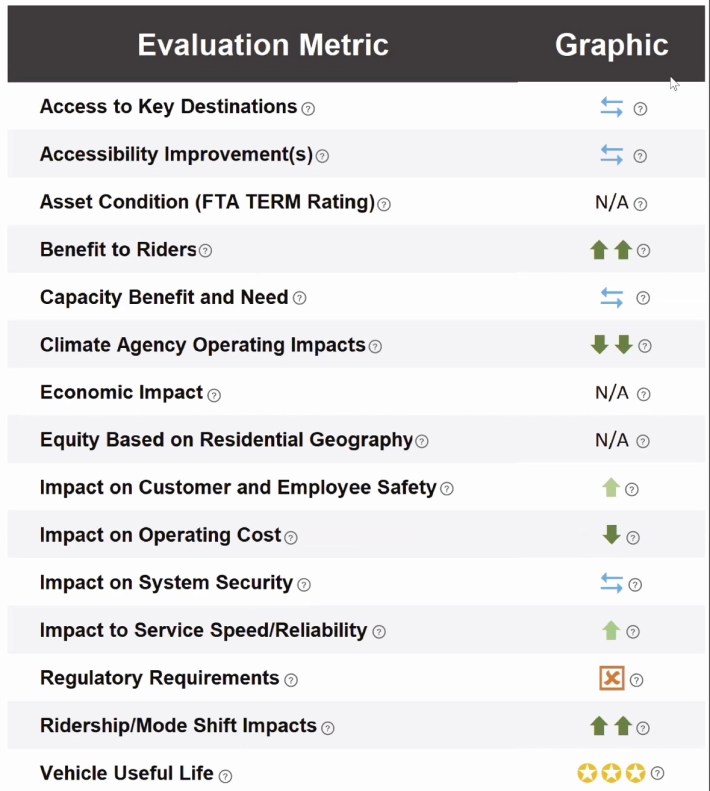
The next panelist was Chris Szmurlo, an RTA principal analyst for the past eight years. His responsibilities include managing the RTA website and various mapping efforts. He talked about where users could find more information about the capital program and the evaluation metrics Sung had discussed on the Regional Transportation Authority Mapping and Statistics website.
"As John alluded to, we are in the process of adding visualizations to our tables on RTAMS," said Szmurlo. "Here is a quick sneak peak of what something like that would look like. It looks very similar to the tables I showed earlier, just adding a kind of visualization feature, making it easier for people to quickly see what they're looking at."
Next was Clare McGuire, the senior project manager for controls for the Red Line Extension. She huge focus of the RLA is equity for impacted residents. She also discussed the project's Transit-Supportive Development plan.
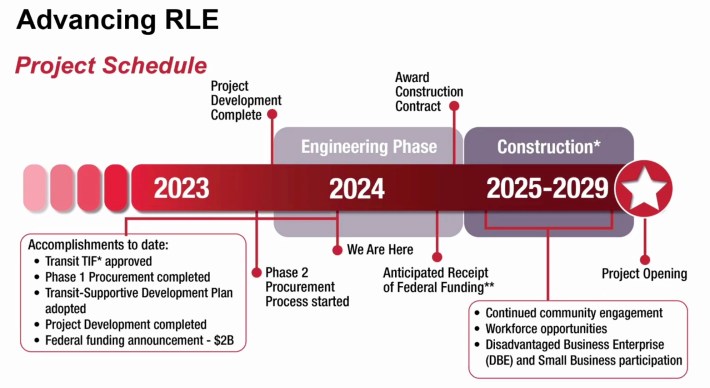
"This was adopted by the plan's commission in May of 2023," said McGuire. "It outlines the potential for different types of development in communities near the project area. So, as you go through each station, the section for each station, there was a lot of community engagement that went into this plan."
Roberto Torres is the chief mechanical officer, where he manages implementation and performance for electrifying Pace buses, facilities, and infrastructure through the agency's Projects Zero initiative to reduce emissions. "We are also future-proofing to ensure that our facilities will be able to accommodate changes in the future," he said. "The designs considered everything from structural modification to accommodate the additional width of charging equipment, oversized conduits to enable Pace to accommodate garages as more [electric vehicles] go into service on an annual basis."
Dustin Clark is a manager in the program development and grant pursuit division at Metra. That branch manages the one-year capital program, drafts the five-year capital program, and writes the agency's discretionary grant program. Clark talked about developing grant proposals that promote accessibility across the transit system and region.
According to Clark, the criteria includes 30 percent strategic alignment with safety and security, customer service, and cost. Then there's 10 percent project readiness, 35 percent conditions, 10 percent mandate, 10 percent accessibility, and 5 percent reduce emissions. Clark also mentioned that they have a monthly discretionary grant opportunity review session with various departments in their agencies.
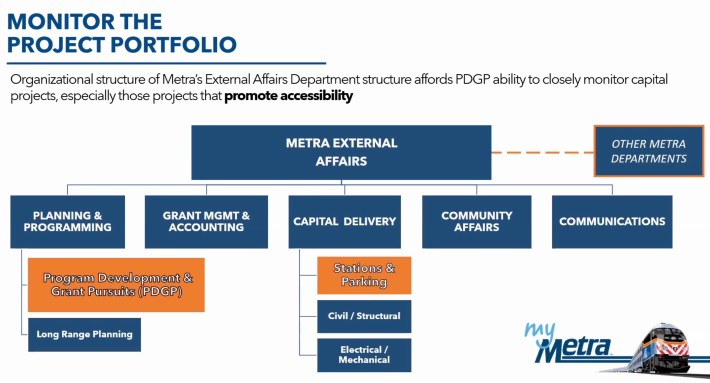
"A critical part of our application process and pursuing discretionary grants is to really focus on how this impacts people," said Clark. "And it's not just a station, it's not just a rendering. It is how somebody gets to work or to their grandma's house, to the hospital, or a doctor's office, rather. So we need to tell a compelling story of how this project will impact our communities and Northeast Illinois and how it will improve the regional transportation system."
The next three Transportation Tuesdays will be held in June on Wednesdays from noon to 1:30 p.m. The first one on June 4, will discuss parking mandates. The next one on June 11 will discuss building transit-friendly streets and bus rapid transit. The final one on June 18 will cover the ways that transit funding has changed following COVID-19.

Did you appreciate this post? Please consider making a tax-deductible donation to support Streetsblog Chicago's paywall-free sustainable transportation reporting and advocacy.
